Wine Spotlight: A South African Symphony – Pinotage Elegance
A South African Symphony – Pinotage Elegance
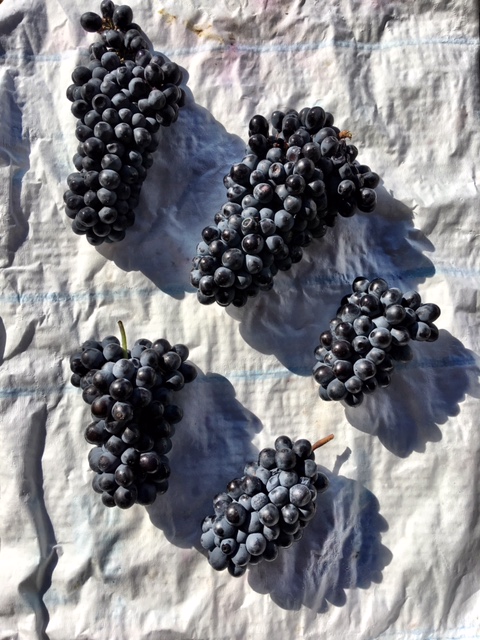
Appearance:
South African Pinotage graces the glass with a captivating deep ruby red hue, hinting at the rich character within. Its clarity and vibrancy suggest a wine that is both youthful and inviting.
Aroma:
Upon the first swirl, the nose is greeted by a delightful medley of red and dark fruit aromas. Juicy plum and ripe cherry take center stage, accompanied by a subtle hint of raspberry. Layers of spiciness unfold, with a touch of smokiness and a hint of chocolate. The aromatic profile is both inviting and complex, setting the stage for an intriguing tasting experience. (yeast suggestion: RC-212, D254, D80, and BM4X4)
Palate:
The palate echoes the promises made by the aroma, delivering a well-orchestrated performance of fruit and spice. Ripe blackberry and red cherry flavors dance on the taste buds, complemented by a nuanced layer of plum. The wine exhibits a smooth, medium-bodied texture, with soft tannins providing a gentle structure. A touch of oak (French oak, medium toast) adds depth without overshadowing the varietal’s inherent characteristics.
Flavor Profile:
South African Pinotage exemplifies the distinctive qualities of the grape and the terroir of their wine country. The fruit-forward nature is complemented by a subtle earthiness and a trace of cedar. There’s a delightful balance between the vibrant fruit expression and the savory elements, creating a harmonious and thoroughly enjoyable flavor profile.
Pairing Suggestions:
South African Pinotage is a versatile companion at the table. Pair it with grilled lamb chops, mushroom risotto, or even a smoky barbecue for a delightful experience. Its approachable nature makes it equally enjoyable on its own, making it a fantastic choice for casual gatherings or more formal occasions.
Overall:
South African Pinotage is a testament to the grape’s adaptability and the winemaker’s skill. It strikes a perfect balance between fruit-forward exuberance and the complexities that make Pinotage unique. The wine is expressive, inviting, and showcases the essence of South African winemaking.
Interested in making South African Pinotage? Give us a call at 877-812-1137 to speak to a winemaking representative about your order. Cheers!
Hurry! Get Your Spring Orders In Before It’s Too Late!
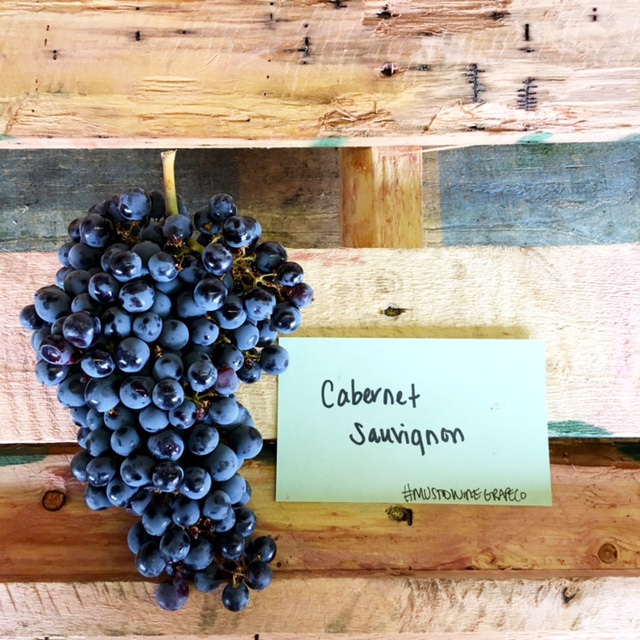
Dear Valued Winemakers,
We hope this post finds you well and excited about the fantastic Spring products we have in store for you! As we gear up for another exciting week, we wanted to remind you that time is ticking, and we don’t want you to miss out on the opportunity to get your hands on our amazing Spring offerings.
From South Africa:
Juice Varieties: Shiraz, Merlot, Pinotage, Cabernet Sauvignon, Semillon, Chardonnay, Pinot Grigio, Chenin Blanc, Sauvignon Blanc
Fresco Juice Varieties: Cabernet Sauvignon, Pinotage, Shiraz, Sauvignon Blanc
Arrivals: Last week in April
From Chile:
Grapes Varieties: Carmenere, Cabernet Sauvignon, Cabernet Franc, Malbec, Merlot, Petite Verdot, Pinot Noir, Syrah, Chardonnay, Pinot Grigio, Sauvignon Blanc, and Viognier
Juice Varieties: Carmenere, Cabernet Sauvignon, Cabernet Franc, Cabernet/Merlot Blend, Malbec, Merlot, Petite Verdot, Pinot Noir, Syrah, Chardonnay, Pinot Grigio, Sauvignon Blanc, and Viognier.
Fresco Juice Varieties: Cabernet Sauvignon, Carmenere, Malbec, Merlot, Chardonnay, Chardonnay-Semillon, Sauvignon Blanc, Viognier
Arrivals: First week in May
Whether you’re looking for that perfect blending wine, treating yourself to something special, or simply stocking up on your favorite variety, now is the time to act! Our boats will be arriving soon and they are brimming with top-quality products waiting to be discovered. We wouldn’t want you to miss out on the fun of Spring winemaking. Don’t let procrastination steal your joy – place your order today and let the anticipation begin!
So, what are you waiting for? Join the excitement, and let’s make this Spring winemaking experience one to remember!
Thank you for choosing Musto Wine Grape Co. We truly appreciate your continued support.
Happy Winemaking!
Warmest Regards,
The Musto Crush Crew
877-812-1137
Pinotage Perfection: Crafting Excellence in South African Vineyards
Nestled in the breathtaking landscapes of South Africa, a grape varietal has captured the hearts of winemakers and connoisseurs alike – Pinotage. Born and bred in the Cape Winelands, Pinotage is a testament to the fusion of tradition, innovation, and the terroir that makes South African winemaking truly exceptional. Join us as we explore why making Pinotage wine in South Africa is a journey into vinous greatness.
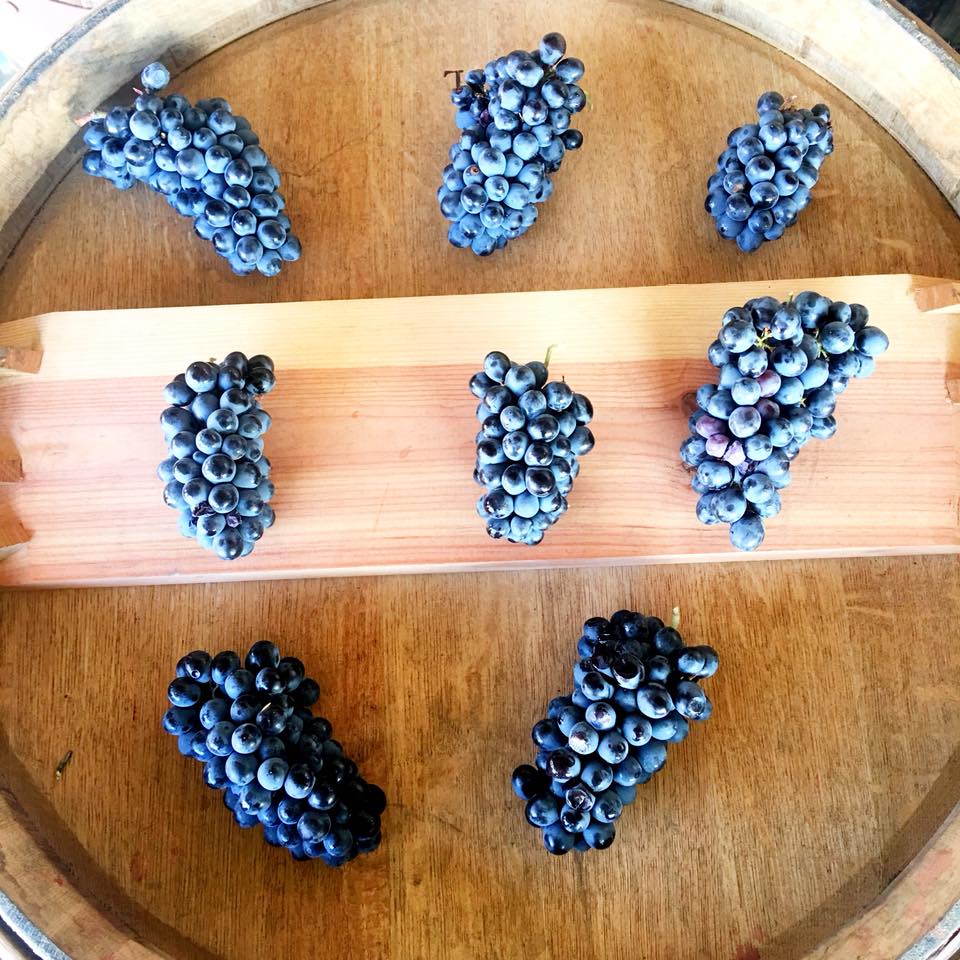
A Unique Grape with a Distinct Identity:
Pinotage, a cross between Pinot Noir and Cinsaut, was created in South Africa in the early 20th century. This grape has since evolved into a distinctive varietal, embodying the spirit of the region. Known for its bold, robust character and complex flavors, Pinotage stands as a symbol of South African winemaking innovation and determination.
Embracing the Terroir:
South Africa’s diverse terroir plays a pivotal role in shaping the character of Pinotage wines. From the warm valleys of Stellenbosch to the cool slopes of Walker Bay, each region imparts its unique signature on the grapes. The result is a spectrum of Pinotage wines, from fruit-forward expressions with hints of cherry and raspberry to more complex profiles featuring smoky, earthy undertones.
Winemaking Mastery:
Crafting Pinotage requires a delicate balance between tradition and modern winemaking techniques. South African winemakers have honed their skills to showcase the best qualities of the grape. Oak aging (French Oak, Medium Toast), fermentation methods (Yeast Suggestions: RC-212, D254, D80, and BM4X4), and blending strategies are meticulously chosen to enhance the inherent characteristics of Pinotage, creating wines that are both bold and elegant.
Versatility in Styles:
One of the beauties of Pinotage is its versatility. Winemakers in South Africa produce a range of styles, from youthful and vibrant wines suitable for early consumption to more complex, age-worthy expressions that evolve beautifully over time. This diversity caters to a wide audience, making Pinotage a wine for every palate and occasion.
Conclusion:
In the heart of South Africa’s vineyards, Pinotage reigns supreme as a symbol of the nation’s winemaking prowess. The unique identity of this grape, shaped by the diverse terroir and the expertise of passionate winemakers, makes crafting Pinotage wines an art form. So, the next time you raise a glass of South African Pinotage, you’re not just sipping a wine – you’re experiencing the soul of a nation in every nuanced sip.
Interested in making South African Pinotage? Give us a call at 877-812-1137 to speak to a winemaking representative about your order. Cheers!
What is Cold Soaking?
Cold soaking, also known as pre-fermentation maceration, is a winemaking technique that is widely used in the production of red wines. It involves holding crushed red grapes at a low temperature and takes place before fermentation.
Why should I be cold soaking?
Cold soaking red grapes such as Pinot Noir, Cabernet Sauvignon, Merlot, and more has many benefits. The aim of a cold soak is to extract more aromas, aroma intensity, and color from the skins of the grapes. In red wines, it makes for a more intensely fruity and deeper-colored wine; but it also makes for a fuller wine with increased palate weight. For example, in Pinot Noir, cold-soaking extracts the softer, more supple tannins to help produce a silky mouthfeel. It also helps emphasize the lush fruit notes like dark cherry and plum. Yum!
But wait; there’s more: Firstly, time in a cold soak, even a brief one, lets a winemaker get a much better handle on the fruit at hand, enough time to get a tank thoroughly mixed, time for any raisins in the fruit to reveal their sugars, time to get more trustworthy readings on basic wine chemistry than the numbers grabbed in the rush of fruit delivery. And second, extracting some goodies early in the cycle leaves open the option of pressing slightly early and working off the last few Brix in barrel, again minimizing the influence of nasty seed tannin.
How do I do it?
It is important to maintain a chilled temperature because if the must gets too warm it can begin fermenting. To properly cold soak, you need to maintain a temperature of about 35-45 degrees Fahrenheit. This could be difficult for home winemakers without a chiller system. Try using dry ice or ice tubes ser in the wine to the wine as cold as you can. Remember, the point of the low temperature is to be sure the yeast cannot get started.
This is usually done for about 5 days, though the length of time varies according to the winemaker’s goals and the grape variety. You should add enzymes to help the extraction move along, and sulfur dioxide to inhibit unwanted microbial activity. Using inert gas to prevent oxidation is also a great idea. Inert gases, known as carbon dioxide, nitrogen, and argon are necessary for winemaking. They are used to supplant air in places where air could come into contact with the wine.
Need help with cold soaking your grapes?
Musto Wine Grape Company is here to help. Give us a call at (877) 812-1137 to speak with one of Musto’s Crush Crew members. We’re here to provide you with the best quality wine grapes, juices, and equipment, as well as the support to ensure you are successful in making the wine of your dreams!
Special Primitivo coming from fifth generation farmer Berton Costamagna
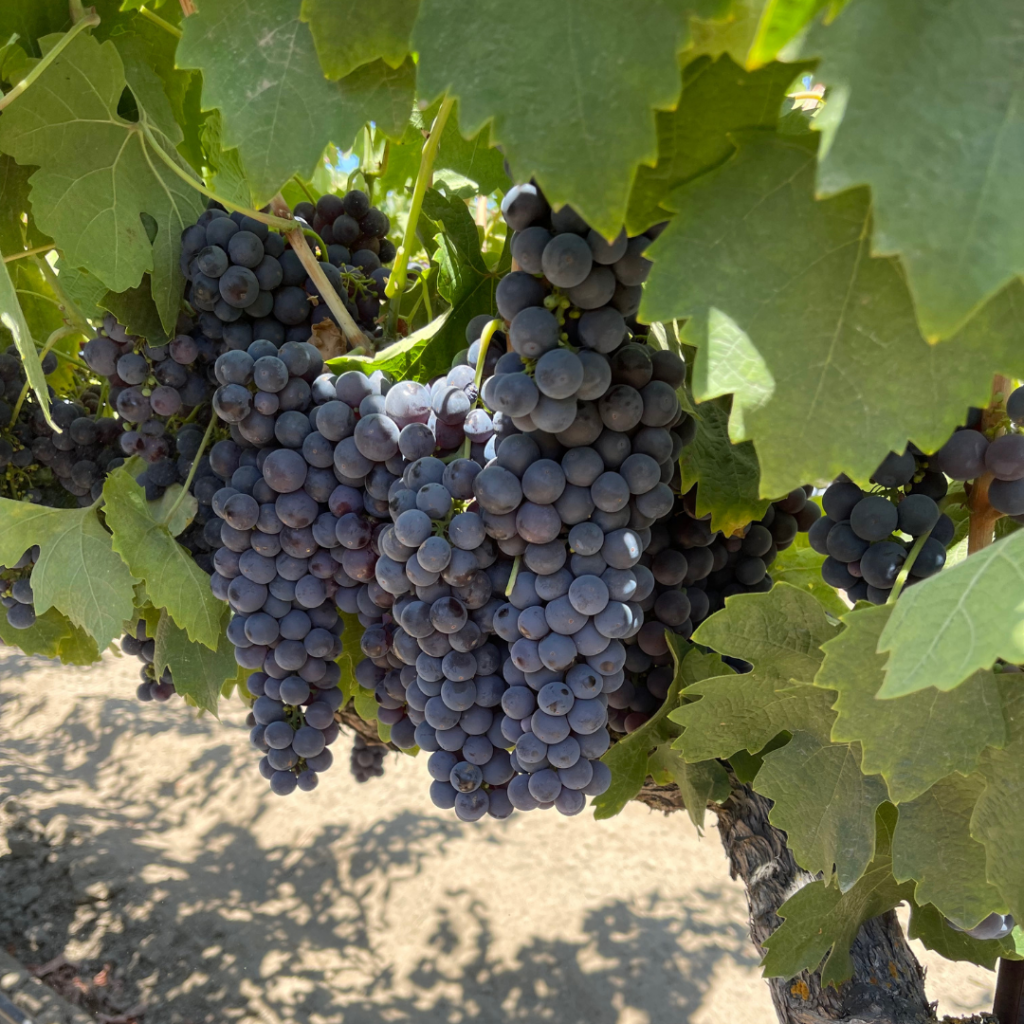
Special Primitivo coming from fifth generation farmer Berton Costamagna
There is something very special about walking through this Primitivo vineyard for fifth generation farmer Berton Costamagna. “Since 1902 my family has been here in Lodi farming these wine grapes”, says Berton. “To think that my Nono (Great, Great, Great Grandfather) had the foresight to start a farming adventure back then, by planting his first vineyard of Primitivo here, and to see where it is now, is so inspiring to me.” With its sandy loams, and ideal climate, farmers back then quickly saw the potential for growing wine grapes in Lodi, in the heart of California. Fast forward 120 years, and Lodi California has come to be known as the Zinfandel Capital of the World, and is now one of the top producing AVA’s in the world. The Costamagna family has continued farming their family’s clone of Primitivo for all these years for wineries and home winemakers to enjoy with their families. “These grapes make for a great wine, but what is truly special, is these grapes connect us to the hard work, traditions, and memories of my family before me. My hope is that folks can make as many memories drinking the wine from these grapes as our family has made farming them.” 🍇🍷 We can’t wait to receive these grapes from the Costamagna Family!
How to Order
We are an old school company. Give us a call at 877-812-1137 or email us at sales@juicegrape.com to get the ball rolling on your pre-order. Don’t forget, we can create custom fermentation templates for you if you would like!
If you aren’t local to New England and need your product shipped, please email sales@juicegrape.com for a freight quote. We will be shipping out of our Bronx, NY location – D’Arrigo. If you live in the Metro NY area and are interested in a freight quote please reach out to sales@juicegrape.com
Unfortunately, we cannot ship fresh juice. We can ship our sterile juices (Original All Juice (juicegrape.com)), they ship year-round without refrigeration. This is the best option for home winemakers who cannot pick up the fresh product from MWG’s facilities.
If you have a large fresh product order (2,000lbs and up), please contact sales@juicegrape.com for a freight quote.
For more information regarding the Fall Harvest please feel free to contact us at sales@juicegrape.com or give us a call at 877-812-1137. We are looking forward to helping you with your next great wine!
Sincerely,
Christina Musto
Musto Wine Grape Co.
Pairing Wine with Salmon
What kind of wine should you pair with your salmon, and why?
It mainly comes down to how you prepare the salmon that really determines what wine to pair with it. Salmon is a fatty fish, so it needs a stronger wine to stand up to it. It has rich fats, making a bitter and acidic wine a good general match. Salmon itself is not acidic, but those rich fats work well in place of acidity, and if you add a citrus glaze it would make the acidity in the wine harmonize better. Salmon is naturally mild but also vibrant, its actually able to work well with many different kinds of flavors.
Deciding on a wine to go with your Salmon can be complex because of all the different options in the types of salmon and how it’s prepared, so we decided to include various types of combinations because everyone has a different taste and preference!
Pairing Wine with Salmon and how it varies with various preparation methods
It’s not usual to pair a sweet wine with salmon, though a sweet glaze can call for a semi-dry wine. Reach for a rose or even a semi-dry Riesling, as both have enough lift to help enhance the sweet glaze but also pair the sweeter elements to the glazed salmon.
Reds, whites and even a rose can work as long as they are low in tannins and higher in acidity. A fuller white wine works well with pan fried salmon which becomes heavier and firmed when prepared this way.
Heavier salmon dishes like smoked salmon or ones with creamy and buttery sauces can call for a sparkling wine. Sparkling wines have the ability to lift up those heavier flavors and textures. For smoked or grilled salmon, try a prosecco. Because the acidity will pull the rich flavors of the salmon, it will also lift the heavier smokey flavors too. For a cream sauced salmon dish, grab some Pinot Grigio. This is a dry wine with a smooth finish and has the perfect amount of structure to complement but also add a textured layer to the creamy dish.
For baked or poached salmon, a classic dry wine with medium body and high acidity like a Cabernet Sauvignon from Sonoma would be an excellent pick. This is a medium bodied red wine with heavier levels of acidity but also a smooth, fruity finish making it a great option. Also, wine aged in barrels can have a real punch of flavor which would further enrich the already rich, natural fats and fresh flavors of the salmon.
Want to make your own wine to go with your next pairing?
Musto Wine Grape Company is here to help. Give us a call at (877) 812-1137 to speak with one of our Crush Crew members to get you on track to making the wine of your dreams!
Fall Foods to Pair with Red Wine
It’s that season! The air is getting crisper, the leaves are starting to change color and your mind is turning to those seasonal favorites such as pumpkin EVERYTHING, apples and apple pie, turkey, roasted veggies and sweet potatoes.
But when it comes to pairing your wine with those delicious autumnal treats, where to begin?
Here are a few things to keep in mind when deciding which red wine to try with your fall favorites.
Venison, lamb or beef stew pair nicely with a Red Bordeaux, Barbaresco, or Barolo. Another favorite dish in the autumn season is sweet potatoes. Pair yours with a rich red Zinfandel or if you are having more of a mashed version, enjoy it with a red blend or a lighter Pinot Noir.
Choosing a hearty vegetable stew with mushrooms or fig and goat cheese on almost anything, especially a pizza, also taste better when they are paired with a Pinot Noir. As it is so versatile, Pinot Noir also goes well when had with pork as well.
When considering meals during colder temperatures, comforting side dishes such as butternut squash risotto go nicely with a lighter Italian Dolcetto. Or a great bowl of Sausage Bolognese goes well with Sangiovese or Barbera.
Another favorite dish to indulge in even more so when the temperatures drop is a hearty chili. Serve it with a nice Malbec that will hold up well against all the flavors of the chili.
If you make a short ribs dish braised with vegetables that are cooked in red wine or something such as cheddar mashed potatoes, you can pair these with a Pinot Noir or Merlot. These red wines are medium-bodied and will add to the earthy flavors of these items.
And don’t forget desserts in the fall. That slice of pumpkin pie would be even sweeter with a glass of barrel-aged Port. Something to keep in mind, you typically want your wine to be sweeter than the dessert you are pairing it with. If a wine is too dry it will not taste as well with an overly sweet dessert.
No matter what you make in your lineup of fall favorite dishes, there is certainly a red wine to pair with it. Hopefully these gave you some ideas as you plan your autumn menu and go shopping for your wine; or better yet, see what you have in your own cellar.
Written by Michelle Griffis aka the Nutmeg Nose for MWG
Source 1
Source 2
Source 3
Source 4
A Guide to Malolactic Fermentation
Malolactic Fermentation, also known as Secondary Fermentation or “Malo”, is the process in which Malic Acid in the wine converts to Lactic Acid.
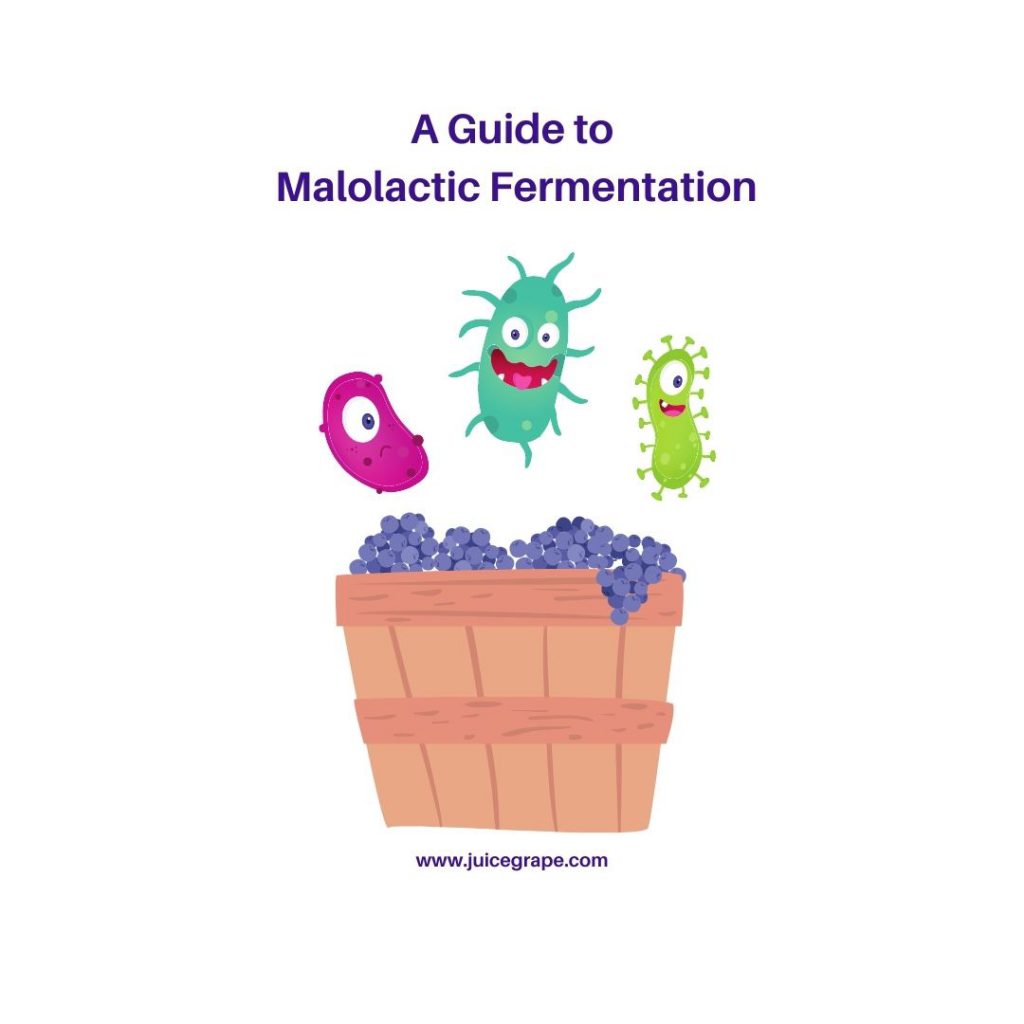
What is Malolactic Fermentation?
As stated above, it is the process in which Malic Acid in the wine converts to Lactic Acid. The primary role of Malolactic Fermentation is to deacidify the wine which affects the sensory aspects of wine, making the mouthfeel smoother and it adds complexity to the flavor and aroma of the wine. The deacidification of the wine happens by converting the harsh diprotic malic acid into the softer monoprotic lactic acid. Nearly all red wines go through Malo while only a few whites, like Chardonnay and Viognier, do. One way to recognize if a wine has gone through Malo is if it has a creamy, buttery mid-palate texture. The buttery flavor comes from diacetyl, a by-product of the reaction.
What is Diacetyl?
Diacetyl is a flavor metabolite produced by lactic acid bacteria known as Oenococcus Oeni. Oenococcus Oeni is the main bacteria responsible for conducting Malo, due to its ability to survive the harsh conditions of wine. It is responsible for the production of the sensory aspects noted above. Malo can happen naturally, though often inoculated with the bacteria culture to jumpstart the process.
When does Malo take place?
Malolactic Fermentation can happen in two different ways, during primary fermentation or after. Amid fermentation, it is Co-Inoculation. After fermentation, it is Post-Fermentation Inoculation. Inoculation that takes place after alcoholic fermentation is the most common practice. When you add bacteria cultures like MBR31 after fermentation is complete, it jumpstarts the Malo process. Co-inoculation takes place at the start of alcoholic fermentation, which allows winemakers to focus on other things such as the improvement of flavor development.
What are the signs that Malo is in progress, and how do I know if it is finished?
The best way to identify malo in progress is bubbles! The malolactic activity can be detected by the presence of tiny carbon-dioxide bubbles. When the bubbles stop, Malolactic Fermentation is complete. This can take anywhere between one and three months.
What are the benefits of each method?
Firstly, the benefits of post-fermentation inoculation include better control of the start time duration of Malo. Lessened biogenic amine production leaves the wine unprotected by sulfite for a limited amount of time. This allows less potential for spoilage by other organisms. It reduces the incidence of excessive volatile acidity and enhances flavor profiles and complexity. The benefits of co-inoculation include lower levels of the inhibitory alcohol that are present at the start of Malo, and no need to apply external heating to the ferment due to the heat generated by the yeast fermentation. This results in faster completion of Malo. This means the wine can have sulfite added earlier and reduces the potential for the growth of spoilage organisms. Finally, a bonus is that bacteria added at the start of the yeast fermentation encounter a nutrient-rich environment.
Need assistance with your winemaking process?
Musto Wine Grape Company is here to help. We offer a wide variety of products and services to help you at any stage in your winemaking journey. Email winemaker@juicegrape.com or call us at (877) 812-1137 to speak with someone who can assist you.
Popular Red Grapes for Home Winemakers
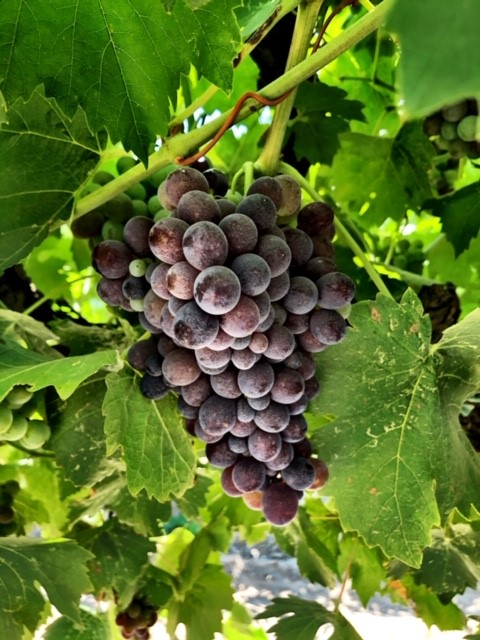
Ever wonder what the most popular red wine grapes are to use when making red wine at home? Well, wonder no more. Here is the list you’ve been looking for.
Try using these four popular red wine grapes as you begin your home wine making journey:
Cabernet
Merlot
Old Vine Zinfandel
Petite Sirah
Why these grapes you ask? Well, here are a few things to consider:
- Cabernet – This is age worthy wine; cellar for 10+ years, produces a dry and full bodied wine with medium to high tannins, medium acidity and has 5–15% ABV
- Merlot –This wine can be aged in your cellar for 10+ years and has flavors of cherry, plum, chocolate, bay leaf and vanilla with a tasting profile that makes it a bone-dry wine, with medium to full body, medium to high tannins, medium acidity and 13.5–15% ABV
- Old Vine Zinfandel – Ages for 5-10 years, it is a bold, fruit forward red that’s loved for its jammy fruit and smoky, exotic spice notes; it makes a dry red with medium to full bodied flavor, medium to high tannins, medium to low acidity and has over 15% ABV
- Petite Sirah – Another 10+ years of aging and is loved for its deeply colored wines with rich black fruit flavors including sugarplum, blueberry, dark chocolate, black pepper and black tea and makes a dry, full bodied wine with high tannins, low acidity and over 15% ABV
What red grape will you start with today? Let us know what popular red wine you are excited to start making this season.
Email sales@juicegrape.com or call 877-812-1137 to order or discus making wine from home!
Sources
Written by Michelle Griffis aka the Nutmeg Nose from MWG
Montepulciano 2020 By Joseph A. Picone, DMD
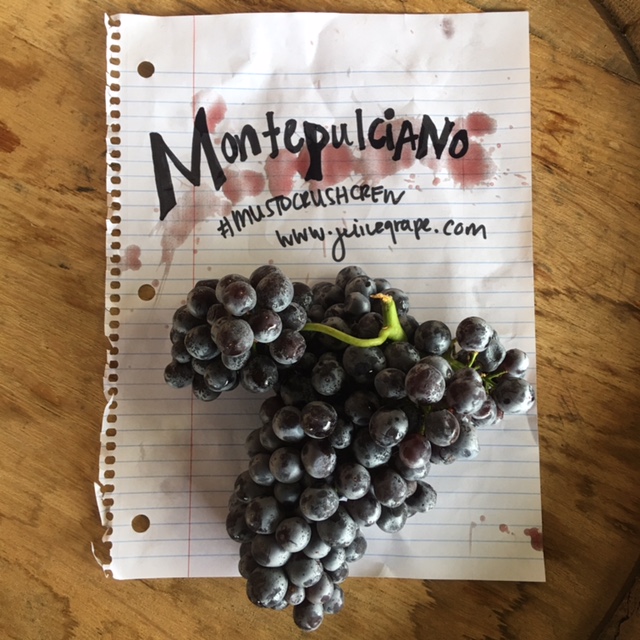
Montepulciano 2020 By Joseph A. Picone, DMD
I had the pleasure to obtain 10 (36lbs) cases of Montepulciano grapes from Musto Grapes (Frank Musto) on October 10, 2020. Making wine using the many varieties of first class Musto sourced grapes has been an Annual fall event for the Picone family and our friends for the past 30 years or so. Over the years, I have made Cabernet Sauvignon, Merlot, Old Vine Zinfandel, Sangiovese, Malbec, Reisling, Chardonnay, Sauvignon Blanc, Moscato, and White Zinfandel to name a few. Each having their own unique qualities to enjoy. Frank and his crew are great in providing all the resources and guidance needed for the first-time wine maker all the way to the seasoned-pro. I was fortunate to have taken a one semester class years ago at Naugatuck Community College on Wine Making given by Bob Herold which together with Frank’s support team has allowed me to create some delicious wines over the years.
I would like to share my experience with you on making this year’s Montepulciano 2020.
The grapes were outstanding. The Brix reading on the refractometer was 25. The clusters were full and the berries were a beautiful deep purple. The boxes were well packed with few if any leaves. We crushed the 360lbs of grapes and immediately added some potassium metabisulphite to kill any wild yeasts. My crusher is also a destemmer, so all the stems were separated from the must during this process. The pH of the must started at 3.70 which wasn’t surprising due to the high Brix reading. I added an appropriate amount of Tartaric acid to bring the pH to a more desirable 3.41 the day of crush. 25 ml of Color Pro enzyme was added at this time as well.
At approximately 24 hours post crush, the Must was inoculated with 35 grams of yeast BM 4X4 in a solution containing GoFerm yeast nutrient. The temperature of the Must at the time of inoculation was 60 degrees F. The yeast solution was well constituted throughout the must. Periodic punching down of the “cap’ was done every 6-8 hours throughout the primary fermentation time.
At 48 hours post crush, the Must temp was 66 degrees F at the Brix reading was 23.5. Fermaid O was added.
At 72 hours post crush, the Must temp was 75 degrees F and the Brix reading was 20. Fermaid K was added.
At 96 hours post crush, the Must temp was 82 degrees F and the Brix reading was 16. I added oak chips to the vat.
At 120 hours post crush, the Must temp was 78 degrees F and the Brix reading was 8.
At 144 hours post crush, the Must temp was 72 degrees F and the Brix reading was 4. 0.9mg of Malolactic culture VP41 was added to the Must and thoroughly mixed in.
At 168 hours(7 days) post crush, the Must temp was 70 degrees F and the Brix reading was 3. The Must and remnant skins were carefully pressed using a bladder press. The raw yield was approximately 27.5 gallons. The Must was placed in cleaned and sanitized demijohns utilizing airlocks to allow CO2 to escape while fermentation progresses, albeit very slowly. The residual skins were heavily consumed during the fermentation leaving behind very little structure. The color extraction was excellent and provided a deep rich purple wine. More Oak chips were added to each of the glass carboys/demijohns.
The slow fermentation in the demijohns went uneventfully and at 2 months, careful racking was accomplished and an appropriate amount of Potassium Metabisulphite was added to help kill off any more yeast cells(30ppm).
At 6 months post pressing, another racking was accomplished without the addition of any sulphites.
At 9 months, I have just begun bottling and I am very pleased with the wine. It is a crystal clear, deep purple, medium to full body, somewhat fruity flavored wine. I expect it to pair well most any dish but have enjoyed it with pasta, pork, veal, and chicken thus far.
Sincerely,
Joseph A. Picone, DMD






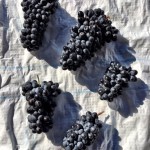
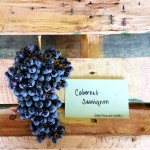
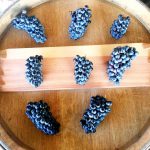
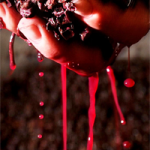
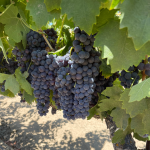
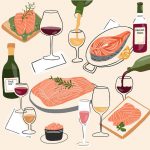
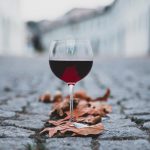
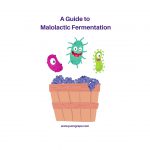
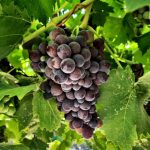
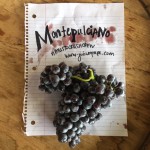
Recent Comments